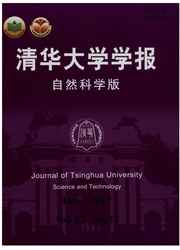

 中文摘要:
中文摘要:
近年来,微博等社交媒体上出现了越来越多的道路交通信息。微博交通数据能够有效补充传统交通数据,为交通分析提供一个新维度。该文以微博数据为基础,总结了人们用自然语言表达交通拥堵程度的常用方式,采用模糊评价方法量化不同人用自然语言描述交通拥堵时的主观感受;采用模糊推理方法进行数据融合,综合评价多人用自然语言描述同一路段道路通行状况时该路段的交通拥堵程度。实验选取3个路段拍摄一定时长的实际路况视频,邀请受试者随机抽取视频片段并对该时刻的交通状况做出主观评价。实验融合评价结果与百度地图发布的实时路况具有一致性,验证了该方法的可行性。
 英文摘要:
英文摘要:
In recent years,an increasing amount of traffic information has been posted on social media such as micro-blogs. This information provides a new opportunity for traffic analysis using micro-blog traffic data to supplement traditional traffic data.The micro-blog data has been analyzed to identify frequently-used natural language description of traffic conditions with fuzzy assessments used to quantify the subjective feelings of different people describing traffic congestion with natural language.The fuzzy reasoning data fusion method aggregated evaluations by different people describing the congestion of the same section of a road.Videos were collected from three road segments with observers invited to evaluate the road traffic conditions in the videos.The integration results are similar to the real-time traffic scenarios released by Baidu Map,which verify the feasibility of this fuzzy method.
 同期刊论文项目
同期刊论文项目
 同项目期刊论文
同项目期刊论文
 期刊信息
期刊信息
